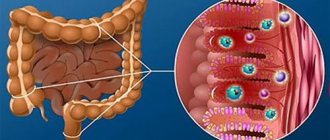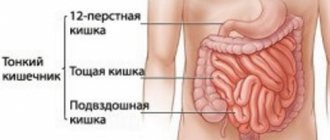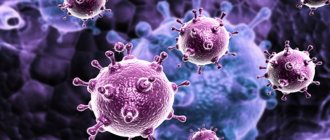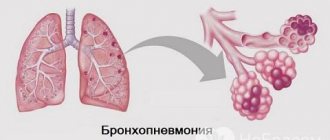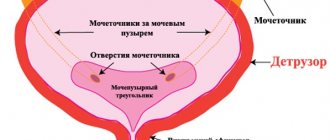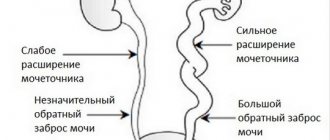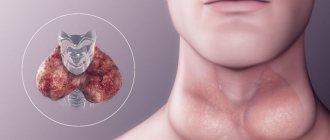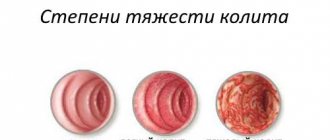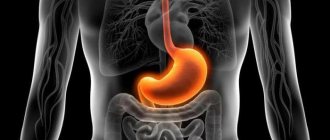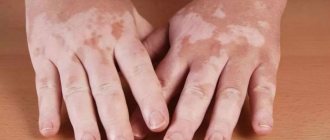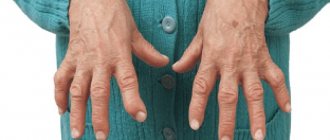Diseases of the blood, hematopoietic organs and individual disorders involving the immune mechanism in the Schedule of Diseases. In what case are they not taken into the army? Read more in this article.
| Article | Name and features of the violation | Suitability categories | ||
| I Count | II Count | III Count | ||
| 11 | Diseases of the blood and blood-forming organs | |||
| Rapid progression or slow progression with significant impairment of function | D | D | D | |
| Slow progression with moderate impairment or infrequent exacerbations | IN | IN | B or C | |
| Slow progression, combining moderate dysfunction and rare exacerbations. | G | G | G | |
What is included in the article
Diseases of the blood and hematopoietic organs include:
- anemia, including inherited or acquired as a result of a number of factors;
- structural abnormalities of red blood cells and hemoglobin, including compensated, hereditary or acquired types;
- dysfunction of platelets and leukocytes of all types;
- cytopenic syndromes;
- impaired hemostasis system, manifested in increased bleeding;
- thrombophilia and other disorders that provoke blood clots;
- capillary fragility;
- vascular pseudohemophilia;
- persistent immunodeficiency states, including all variants of the development of the disease.
Each of them differs in the speed of development, the effect it has on a person, and also the susceptibility to treatment.
Prevention
Preventive measures aimed at preventing the occurrence and development of blood diseases consist, first of all, of a timely visit to a specialist when identifying the first symptoms of common hematological disorders.
Family planning can be a good preventive measure, which helps prevent the occurrence of hereditary blood diseases. If possible, you should undergo an annual examination by a hematologist, not forgetting a general blood test.
Diseases classified as category A
This list includes disorders that develop rapidly and their occurrence seriously affects human health. Such diseases include:
- aplastic anemia;
- cytopenic syndromes, which does not take into account the degree of destructive influence of the disease on a person and the effect of the treatment;
- chronic diseases that have a serious impact on blood and functionality during treatment, regardless of the rate of progression;
- immunodeficiency state that was acquired through immunosuppressive therapy. It is usually required after organ or tissue allotransplantation;
- violations of hemostasis, expressed by frequent bleeding, disturbances in the functioning of organs, and the appearance of internal bleeding;
- hemostatic disorders causing increased blood clot formation, multiple or recurrent vascular thrombosis, thromboembolic complications, and other types of disorders.
All these diseases require prompt treatment and strict medical supervision.
What can a nonspecific indicator of inflammation tell you?
If a blood test shows that the number of red blood cells in the blood is below normal levels, it means that the red blood cells are sedimenting faster. But if the amount of these substances increases, the sedimentation rate decreases. In the first case, the doctor diagnoses anemia. The ESR value is uneven throughout the day and fluctuates, reaching its highest value during the day. When describing the second stage of sedimentation, mention was made of “coin columns”. Their formation is ensured due to the fact that the basis of the blood - its plasma - has a protein composition. This ensures that acute phase proteins, which are adsorbed on the surface of red blood cells, reduce their charge and prevent repulsion from each other. Unable to push away from each other, red blood cells form these aggregates, which contributes to their accelerated sedimentation at the second stage and the cessation of this process at the final, third stage.
If the level of acute-phase proteins increases, this leads to an increase in ESR. During inflammatory processes, this can be facilitated by an increase in haptoglobin, C-reactive protein, and alpha-1-antitrypsin. For example, if a patient has an elevated temperature, then a day after its increase, the ESR changes. At the same time, there is an increase in the number of leukocytes. If the inflammatory processes are chronic, then the ESR increases due to an increase in the concentration of immunoglobulins and fibrinogen.
The indicated indicators and monitoring of ESR over time, conducting complex tests are required to monitor the effectiveness of treatment of inflammatory and infectious diseases. But in addition to treatment, a blood test and its interpretation make it possible to identify ongoing inflammatory processes and infectious diseases at the earliest stages. If the disease in the body has just begun to develop, the person does not experience the painful sensations that come later, when the disease is firmly rooted in the body and makes itself felt through pain. It is these sensations that prompt the patient to look for answers to the question in various sources, be it Wikipedia or a blood test at the clinic.
List of violations from point B
This category assumes a slow progression of the disease. In this case, partial dysfunction or periodic exacerbations are allowed. Similar diseases include:
- hemolytic anemia;
- types of anemia involving congenital structural pathologies of red blood cells and hemoglobin with a stage of compensation;
- hemotylic anemia;
- autoimmune cytopenic syndrome;
- hemostasis disorders;
- pathologies that suggest a long-term effect from the therapy or exclude severe dysfunction.
Here, the decision on suitability is considered on a case-by-case basis.
Anemia
The group of diseases with anemic syndrome covers all types of anemia in humans associated with a drop in hemoglobin levels, damage to the transport and absorption of oxygen. Hypoxia (oxygen starvation) should be recognized as a characteristic symptom of all types of anemia.
Main symptoms of anemia
In older people, a drop in hemoglobin in the blood leads to heart failure. Specific symptoms, for example, unnatural taste in iron deficiency anemia, yellow discoloration of the skin or mucous membranes in hemolytic anemia, or hemorrhage in hypoplastic anemia, are not taken into account.
Diseases included in the lists of point B
This category combines temporary functional disorders, non-systemic disorders in the structure of the blood. This item includes disorders in which a slight limitation in functionality remains after completing the full treatment course.
Consequently, if doctors discover a congenital or acquired pathology of the circulatory system with frequent complications and relapses, the examination automatically takes place under point A. If the disease does not bring much discomfort to the person, diagnostic and medical measures are carried out in advance to objectively assess the state of health. Based on this, a decision is made.
About leukocytes and platelets
Unlike red blood cells, leukocytes are white blood cells. Their function is to protect the blood. The number of these bodies in the blood normally reaches 9 billion per liter, but cannot be less than 4 billion. It is curious that this number tends to increase if a person abuses foods rich in protein. These white bodies behave similarly if a person is subjected to emotional and physical stress. But if the level of leukocytes increases over a long period of time, then this indicates the presence of an infectious disease in the body or an inflammatory process occurring in it.
1. red blood cells 2. platelets 3. blood plasma 4. leukocytes
Finally, platelets, without which the blood would not clot. These elements are responsible for blood clotting. Due to their adsorption properties, platelets stick to each other. This process occurs in great abundance, ensuring the coagulability of the entire red liquid, for which it must contain from 180 to 320 billion of these tiny elements per liter in a normal state. Such a large difference in the number of platelets in the normal state is explained by the fact that it varies greatly from the food eaten, lifestyle - how active or passive it is, the monthly cycle and the individual characteristics of the person. Deviation from the norm in the plasma content of these particles leads to serious consequences. If the platelet count in the blood increases, this indicates a risk of thrombosis, which stimulates the emergence and development of cardiovascular diseases. And if platelets become below normal, the blood becomes thin, which indicates the presence of an immune disease in the body.
Signs of blood disease
Such problems can often be recognized by external signs. Thus, anemia often manifests itself through:
- feeling of weakness;
- increased fatigue, including after minor exertion;
- reduced performance;
- problems with cardiac activity;
- loss of appetite;
- shortness of breath.
Acute and heavy bleeding is expressed in severe weakness, dizziness and even fainting. A number of blood diseases are characterized by fever. The symptom manifests itself weakly during anemia, but is pronounced during the development of acute or chronic leukemia. Similar problems can be suspected with skin itching, loss of appetite, and loss of body weight.
B12 deficiency anemia manifests itself through burning of the tip of the tongue, perversion of taste and smell. People with such disorders can happily eat chalk, clay or earth, as well as inhale vapors of ethers, gasoline or other substances with an unpleasant odor.
Complaints may relate to skin rashes, bleeding from the nose, gums or gastrointestinal tract. Blood loss in the internal organs (stomach and lungs) is considered the most dangerous, since they are more difficult to diagnose independently. Blood diseases affect the functioning of the spleen or liver. Therefore, a person may experience severe pain in the right or left hypochondrium.
Important visual criteria here are changes in complexion. It can take on an alabaster pallor, earthy grey, yellowish or cherry red hue. Each of the colors is a sign of one of the types of anemia. Changes affect the structure of the epidermis. It becomes dry and begins to peel. Along the way, hair becomes brittle and prone to split ends.
Against the background of blood diseases, atrophy of the papillae of the tongue develops, the process of tooth destruction accelerates, and the inflammatory process of the mucous membranes around the teeth begins. So, acute leukemia can be caused by sore throat and stomatitis.
Lymphomas
Malignant lymphomas are a group of tumors of the lymphatic system that arise as a result of the formation of pathologically altered lymphoid cells capable of uncontrolled proliferation (reproduction). Lymphomas are usually divided into 2 large groups:
- Hodgkin's (Hodgkin's disease, or lymphogranulomatosis);
- non-Hodgkin's lymphomas.
Lymphogranulomatosis is a tumor of the lymphatic system with primary damage to lymphoid tissue; accounts for about 1% of all adult cancers; Persons aged 20 to 30 and over 50 years of age are more often affected.
Clinical manifestations of Hodgkin's disease are:
- asymmetrical enlargement of the cervical, supraclavicular or axillary lymph nodes (the first manifestation of the disease in 65% of cases); the nodes are painless, not fused to each other or to surrounding tissues, movable; as the disease progresses, the lymph nodes form conglomerates;
- in every 5th patient, lymphogranulomatosis debuts with enlarged mediastinal lymph nodes, which is initially asymptomatic, then cough and chest pain, shortness of breath appear);
- several months after the onset of the disease, symptoms of intoxication appear and steadily progress (fatigue, weakness, sweating, loss of appetite and sleep, weight loss, itchy skin, increased body temperature);
- tendency to infections of viral and fungal etiology;
- all organs containing lymphoid tissue are gradually affected - pain occurs in the sternum and other bones, the liver and spleen increase in size;
- in the later stages of the disease, signs of anemic, hemorrhagic syndromes and a syndrome of infectious complications appear.
Non-Hodgkin's lymphomas are a group of lymphoproliferative diseases with primary localization predominantly in the lymph nodes.
Clinical manifestations:
- usually the first manifestation is an enlargement of one or more lymph nodes; when palpated, these lymph nodes are not fused together and are painless;
- sometimes, in parallel with the enlargement of the lymph nodes, symptoms of general intoxication of the body appear (weight loss, weakness, itching of the skin, increased body temperature);
- a third of patients have lesions outside the lymph nodes: in the skin, oropharynx (tonsils, salivary glands), bones, gastrointestinal tract, lungs;
- if the lymphoma is localized in the gastrointestinal tract, the patient is bothered by nausea, vomiting, heartburn, belching, abdominal pain, constipation, diarrhea, intestinal bleeding;
- sometimes lymphoma affects the central system, which is manifested by severe headaches, repeated vomiting that does not bring relief, convulsions, paresis and paralysis.
Laboratory tests to identify blood diseases
To confirm or refute a diagnosis established by external signs, a number of tests should be performed:
- The first of them is a morphological study of blood. An important role here is played by a general analysis, which allows one to calculate the number of main blood components, determine the hemoglobin content, and also determine the erythrocyte sedimentation rate. This allows us to detect the development of most types of anemia, as well as leukemia.
- Since the state of the body is not always accurately reflected in a morphological blood test, doctors conduct additional research. Thus, through puncture of hematopoietic organs from the bone marrow, it is possible to expand the picture seen. An analysis of a substance from the sternum or ilium allows us to identify disturbances in the process of cell maturation, the appearance of pathologically altered blood cells, and disturbances in the relationship between the elements of the red or white series.
- Additional sources of information about human health are materials obtained through trepanobiopsy. The procedure involves cutting out a column of bone from the iliac region along with a piece of bone marrow.
- Punctures can be taken from enlarged lymph nodes and the spleen. This makes it possible to determine the relationship between different organs, identify the presence of oncological tumors, sources of extramarrow hematopoiesis, and pathologies of the lymphatic system.
- To look for signs of hemolytic anemia, a test in the form of a hemolysis assessment is required.
- The study of hemorrhagic syndrome includes coagulation and differentiated tests. The first type of analysis is aimed at calculating clotting time, bleeding duration, capillary permeability, and blood clot retraction. The second type of research is related to determining the timing of plasma recalcification, prothrombin consumption, prothrombin index, and plasma tolerance to heparin. Based on this, compliance of blood clotting with standards is determined.
- To determine the size of the spleen, its functionality, as well as to identify lesions, radioisotropic research methods are required.
All this makes it possible not only to identify the type of disorder, but also to determine the source of development of the pathology. This will allow you to direct treatment in the right direction to achieve recovery or stable remission, as well as stop the decline in the functionality of the entire body.
Blood diseases are considered a valid reason for declaring a conscript unfit. The decision of the medical commission will be unambiguous if the pathology develops rapidly, there are frequent exacerbations and relapses, or serious impairments in the functionality of the body due to the disease. If the manifestations are not so obvious, a decision will be made after additional research.
There are several external signs that give reason to suspect a blood disease. These include changes in skin color, the appearance of rashes, loss of appetite, weakness to the point of fainting, disturbances in taste habits and sense of smell. However, to make an accurate diagnosis, you will need to undergo a comprehensive examination consisting of several parts.
How to prepare
Quite often, the informativeness and effectiveness of the analysis depends on proper preparation for it. It is very important to refuse food for 8-12 hours before donation. You must refrain from smoking for an hour before collecting biomaterial. About two days before the procedure, you need to limit the consumption of fatty and fried foods, as well as alcohol in any quantity.
It is advisable to avoid strenuous physical activity the day before a blood test for infections. The study should not be carried out earlier than 10-14 days after finishing taking any drug. In addition, you should not take the test after X-rays, rectal examinations, physiotherapeutic procedures, or minor surgical interventions (including dental procedures).
source
Types of infections
In modern medicine, it is common to divide infections into two large groups - urogenital (genital) infections and TORCH infections. The first group includes all types of infectious diseases that are transmitted during unprotected sexual intercourse (STDs), especially those types that are hidden and chronic:
- Papillomavirus;
- Ureaplasmosis;
- Mycoplasmosis;
- Chlamydia;
- Trichomoniasis;
- Gonorrhea.
The first group of infectious pathologies threatens the health of only the carrier and potential sexual partners. In contrast, TORCH infections can be transmitted from the mother's body to the unborn child (fetus) during intrauterine development. The danger of TORCH infections mainly lies in the fact that, transmitted from the mother’s body, they can provoke the development of various birth defects and pathologies. This category includes:
- Toxoplasmosis;
- Herpes of both types;
- Syphilis;
- Cytomegalovirus;
- Hepatitis infections;
- Measles-rubella;

